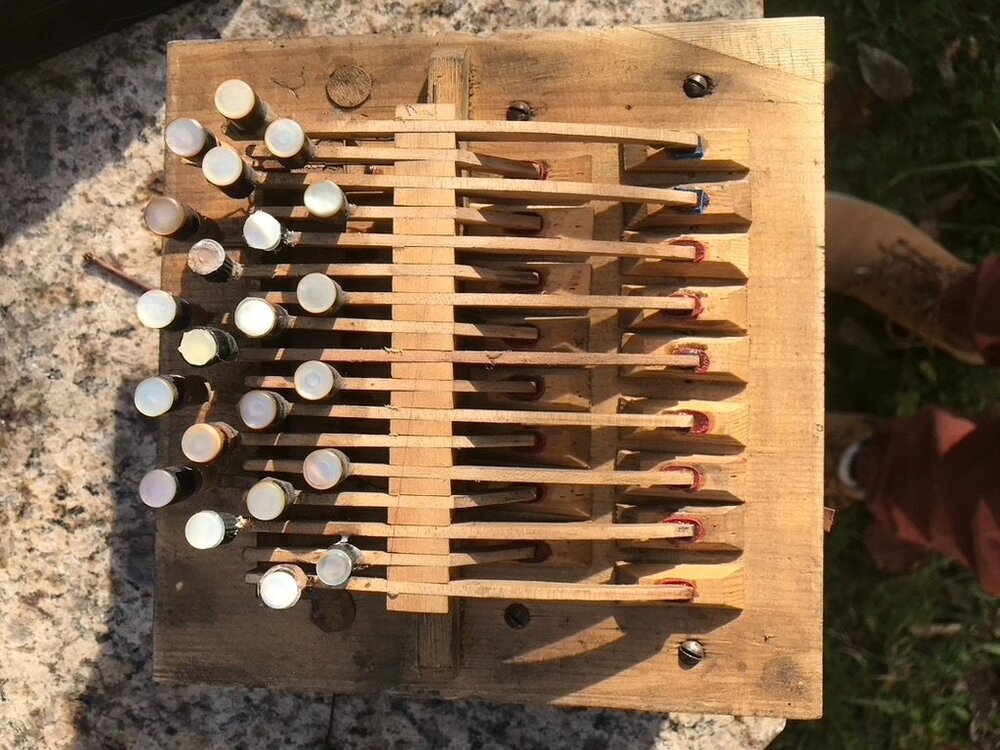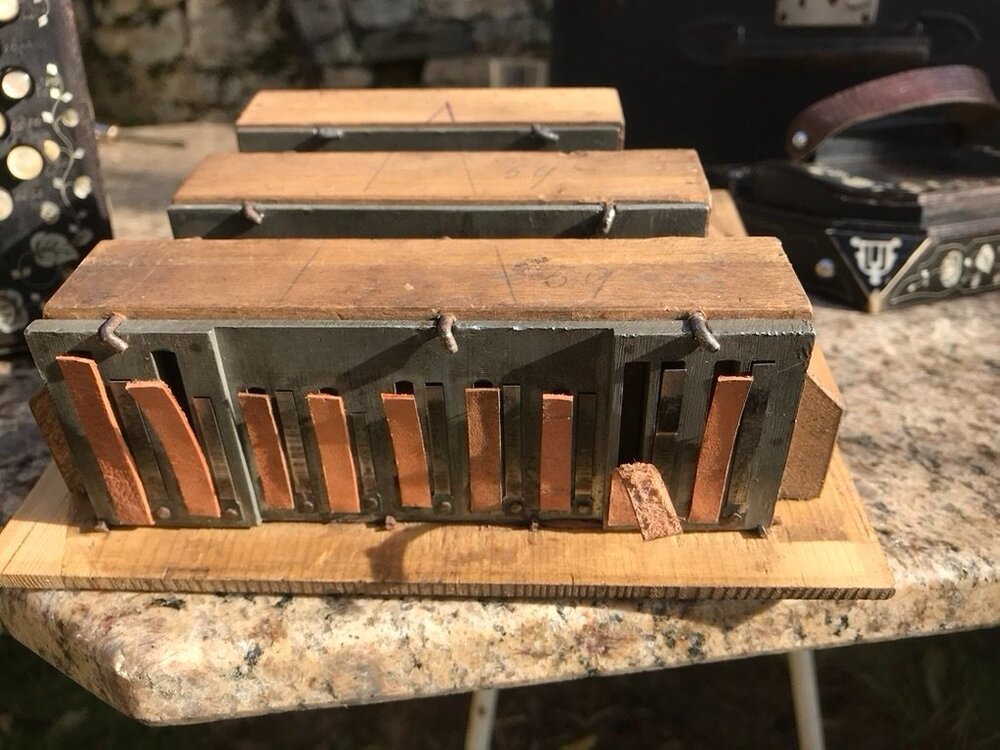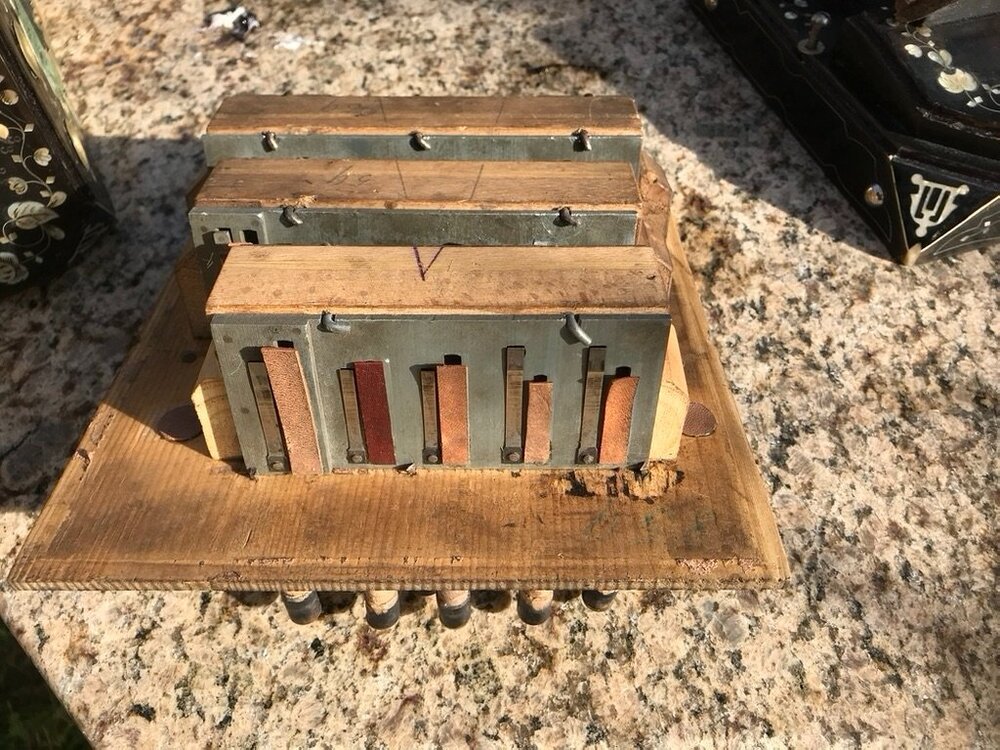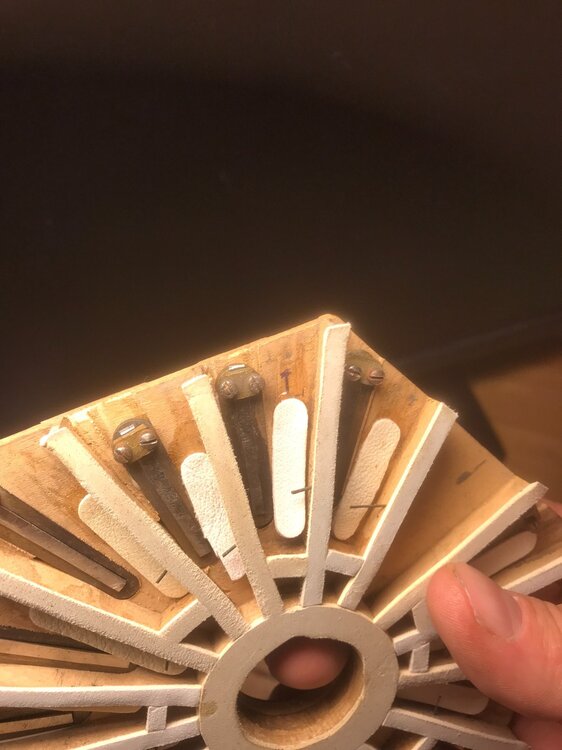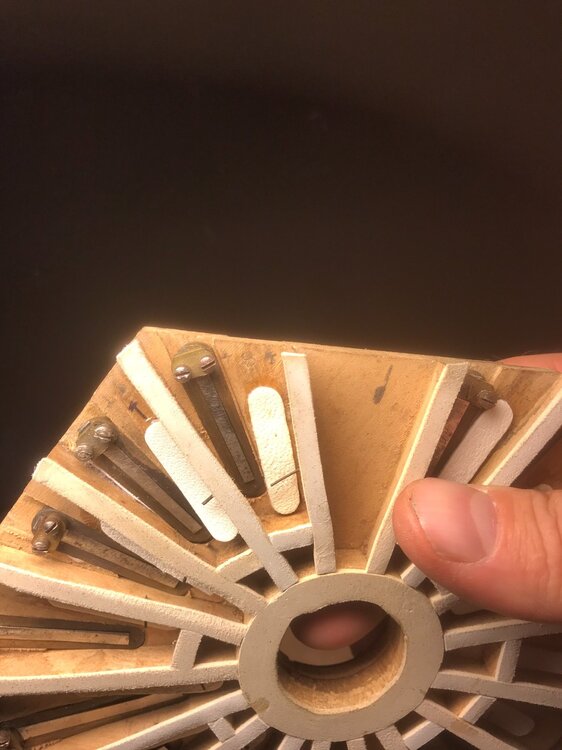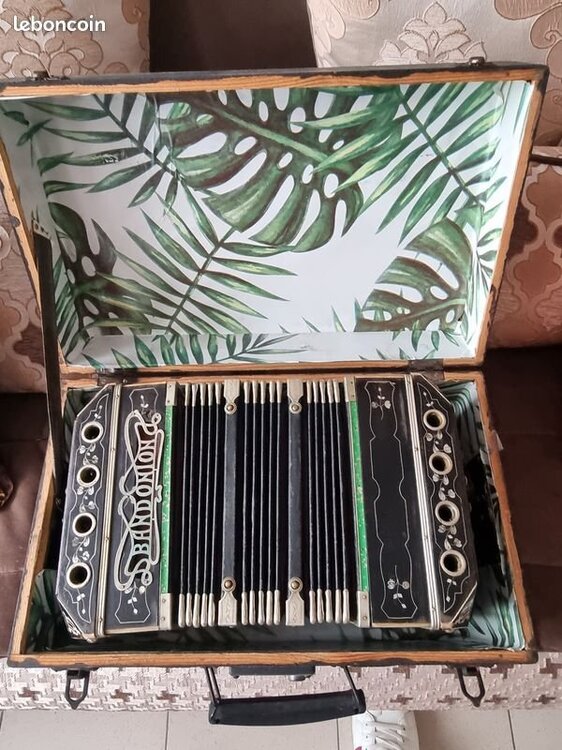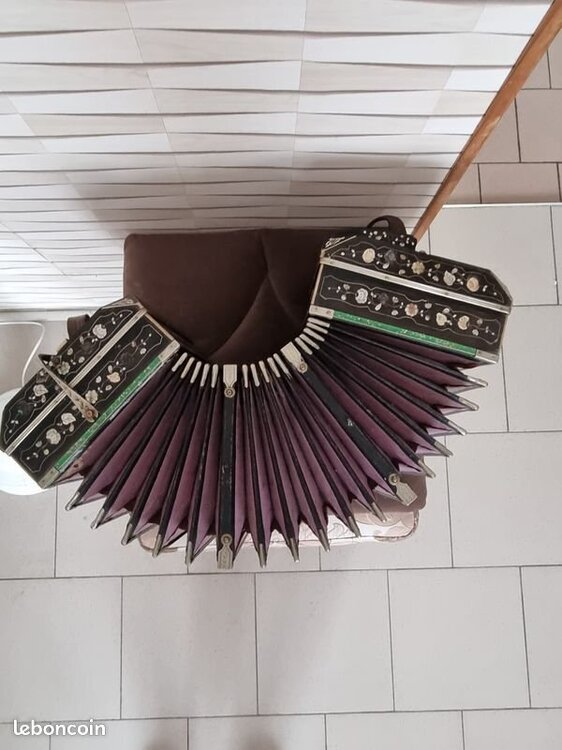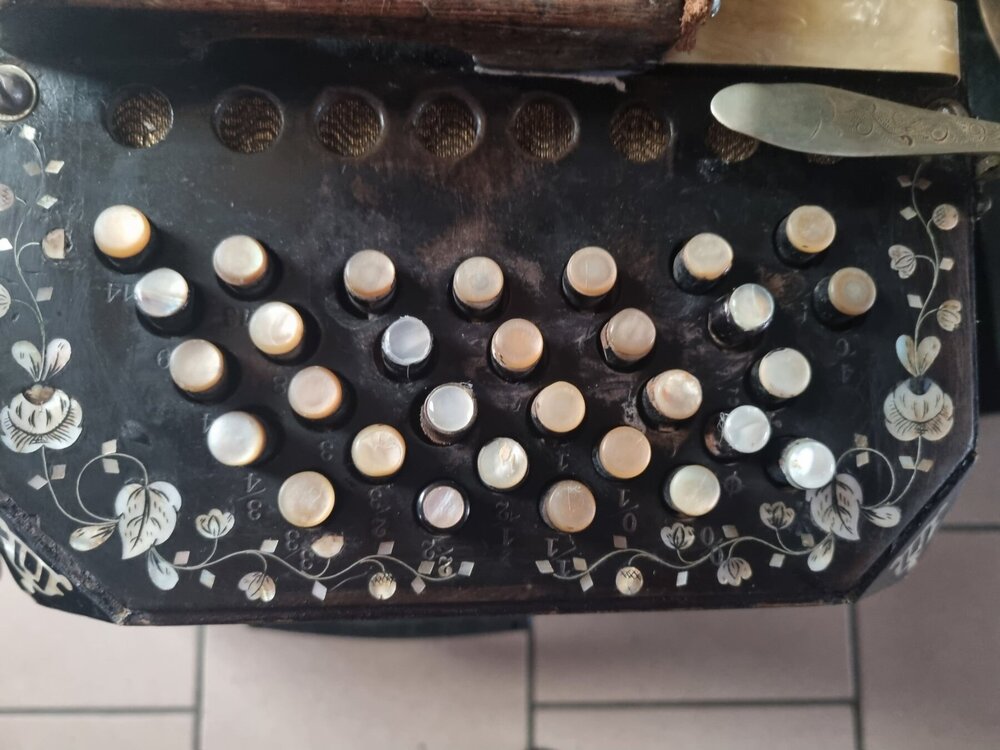-
Posts
463 -
Joined
-
Last visited
About david fabre
- Birthday 05/26/1975
Contact Methods
-
Website URL
http://
Profile Information
-
Gender
Male
-
Interests
Anglo concertina, whistles, piano, ...
-
Location
Toulouse, France
Recent Profile Visitors
david fabre's Achievements

Chatty concertinist (4/6)
-

Help for identification : "Bandonion" with 52 buttons
david fabre replied to david fabre's topic in Concertina History
Hello ! Thanks for asking news. Alas not much more to say on this one. I showed it to Emmanuel Pariselle, the french expert on concertinas, and he said me "good luck" for the renovation. He said that tuning such beasts is a mess ! I'm still considering to start the work with the valves but no time right now. If you want so share photos of yours, I'd be happy to see them ! -
Happy Concertina day to all and thanks for sharing all this great music ! To celebrate the date I recorded this song (from french singer Barbara) on my Lachenal Bb/F. Hope you enjoy ! The posting is also in memory of my mother who loved this song, and who would have been 74 on this february 6. https://www.youtube.com/watch?v=xRDx5bAPLb8
-
Hello, Audacity does the job. It also allows to transpose to a different key and many other things. And it is free !
-

Help for identification : "Bandonion" with 52 buttons
david fabre replied to david fabre's topic in Concertina History
Hi again (and best wishes !) So my christmas present arrived.... Here are a few more photos of the inside of the "bandonion". The condition of the instrument is not that bad : the bellows are airtight, all buttons are operational, all notes are working (except for a few reeds which don't respond), and it seems well tuned to 440. It has zinc plates (my brother who is working in chemical analyses confirmed this). A few pearl incrustations are missing, apart from this the outside appearance is not that bad considering the presumed age. I think changing the leather valves, cleaning the reeds and a little cosmetic care could turn it into a decently playable instrument. I'm not sure if I will keep it or resell it (the layout is still a nightmare to me). Help for identification of the maker, date and valuation is still appreciated ! As far as I could understand, the name "bandonion" is associated to old instruments made by the Band company (from the family of the inventor Heinrich Band). -

Big list of Anglo layouts
david fabre replied to Luke Hillman's topic in Instrument Construction & Repair
Hello Luke and all, My christmas present has been an old "Bandonion" with 52 buttons (104 voices). I wanted to have a try at the bandoneon because the layout has always been a puzzle to me and I wanted to see if I could understand it... after several hours it remains a puzzle ! I'm not sure if I'll keep it or resell it, but meanwhile I transcribed the layout. Here it is ! https://anglopiano.com/?_90_dBhGiEDLch_150_jiYZtxuwWW._60_AdGHIijkLcfA_150_JjmMntouvv._30_BeegHIJjklgJ_150_lkrPMlONpoSq._50_eCklmNOKFf_160_LLknNmPOqpTsVU._530_KKRRqQsrUTwVQS&title=Bandonion 104 voices -

Help for identification : "Bandonion" with 52 buttons
david fabre replied to david fabre's topic in Concertina History
I'll tell you soon ... just ordered it as my christmas present, and should receive it next week. Best wishes ! -

Dating A Lachenal From The Serial Number
david fabre replied to johnconstable's topic in Concertina History
Thank you Stephen ! Thus most parts of my instrument are at least 125 years. The bellows is new, I don't know who built it. Not Rosalie Dipper as i don't see her stamp. I'll ask Emmanuel next time I see him. Best wishes ! David -

Dating A Lachenal From The Serial Number
david fabre replied to johnconstable's topic in Concertina History
Hello again ! A few months ago I asked for help in dating my Lachenal Bb/F which is apparently made with parts of at least 3 instruments. Remember ? it was here : While reopening it for a little fix, I saw a serial number which I did not see at first inspection, on the LHS reed pan. I guess I read "158 484" or possibly "258 484". What does that imply ? In last june Stephen's verdict was 1877 for the frames and the ends, and likely later for reed pans. Does that confirm ? Thanks ! -
Hello to the experts on this forum ! I'm in contact with the owner of an interesting "Bandonion" with 52 buttons (22 on the left, 30 on the right). it is hence a "104 voice" which apparently is not that common. Has anyone any clues about the maker (I guess it's not AA), the age, and the value ? Thanks !
-

Big list of Anglo layouts
david fabre replied to Luke Hillman's topic in Instrument Construction & Repair
... and here is the Carlsfelder, another relative of the bandoneon and Chemnitzer. https://anglopiano.com/?_30_dcAdGHIijkLK.DCBeegHIJjklhf_160_JjlsRnMlONpoSqtx._30_CEfhlFmNOPMMKL_160_LkkMNmPOqpTrVsmU._640_ntQPrQsRUTwuvvoV&title=Carlsfelder For both my source has been here. http://www.korbo.com/piedcrow/diagramindex.htm I have a few doubts about the numbering of the octaves. Maybe some experts on this forum will be able to check. -

Big list of Anglo layouts
david fabre replied to Luke Hillman's topic in Instrument Construction & Repair
Hello Luke, To add to the list of "non-anglo" layouts, I just transcribed the Chemnitzer ! https://anglopiano.com/?_90_dBbGiEDLfh._60_AdGHIijkLc9A._30_BeegHIJjklhfgF_150_LjoRlMMlONpoSqRuuw._60_8CklmNIKFJcD_160_jLmkknNmPOqpTrVstUXx._600_JiQRrPnQsKUTwVvvWt&title=Chemnitzer -
This video is also to demonstrate the possibilities of my "modified Wheatsone layout" . See there (thanks to Luke for his wonderful app) https://anglopiano.com/?_40_CceFgIkjKL_60_mmqpQRsTon._20_AddfGHIijk_100_MlONpoSqUr.feHJjklMNO_140_pPrqTSvUVt&title=David Fabre's GD 30 Here I use a lot the modified notes of my layout, especially pull B3 (left), pull A5 (right), push C#6 (right). This tune would not be possible on a standard Wheatstone layout ! See also there (with some explanations)
-
Just recorded this pop hit from the eighties. On my Edgley 30b G/D, with a few variations. Hope you enjoy !
- 4 replies
-
- 10
-

-

Big list of Anglo layouts
david fabre replied to Luke Hillman's topic in Instrument Construction & Repair
very nice ! and truely mini -

Big list of Anglo layouts
david fabre replied to Luke Hillman's topic in Instrument Construction & Repair
Nice to see the list increasing ! Especially interested to see the miniatures. Takayugi, I see your choices for the Norman are different from mine but make sense ; indeed I remember Andrew said he made a dozen of these (probably more now) and each of them had a different layout. Do you have a picture or a sound file of the picolo Jones ? I'd be curious to see/hear it.





